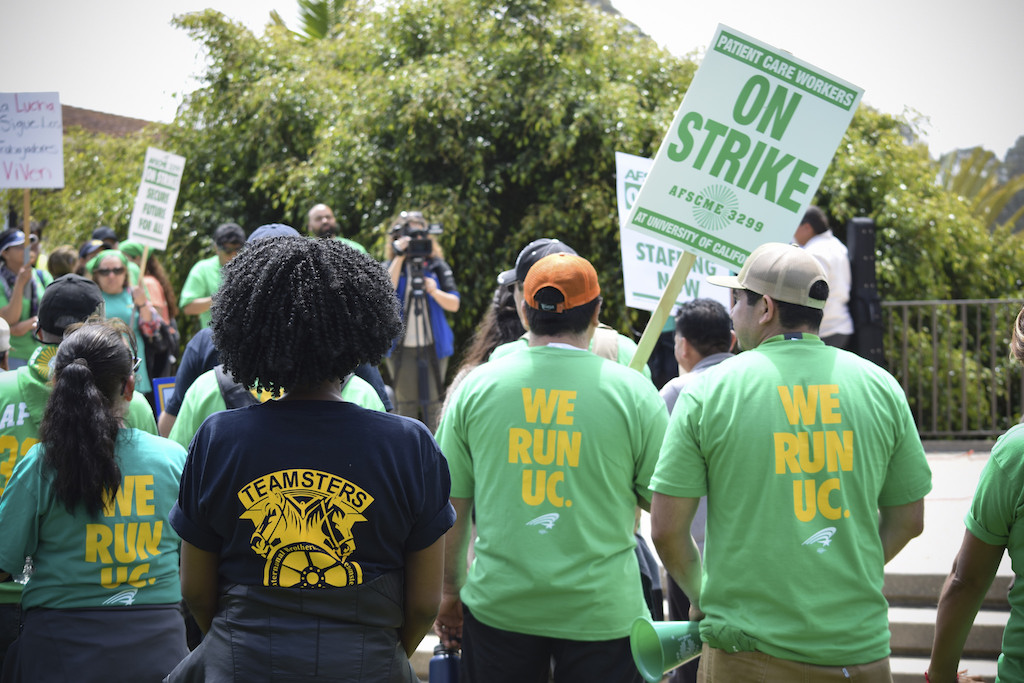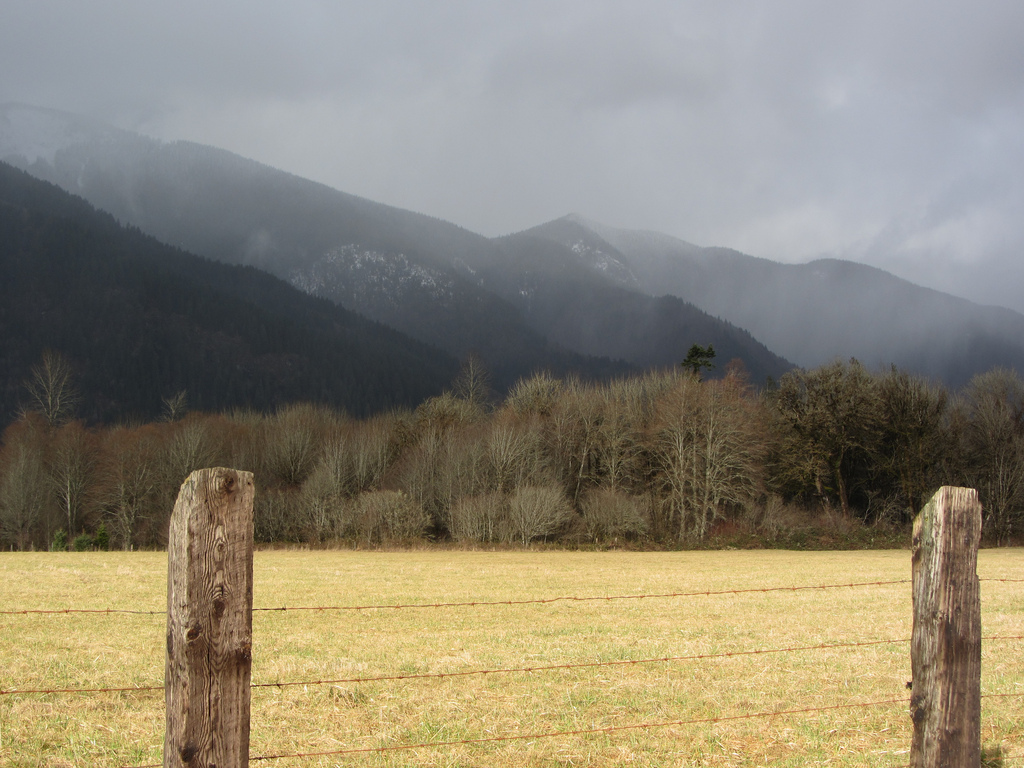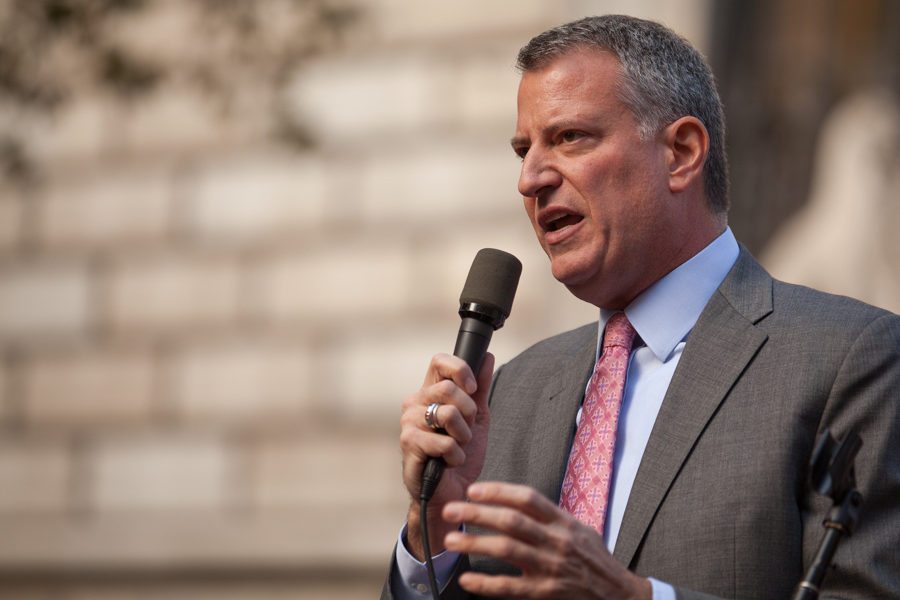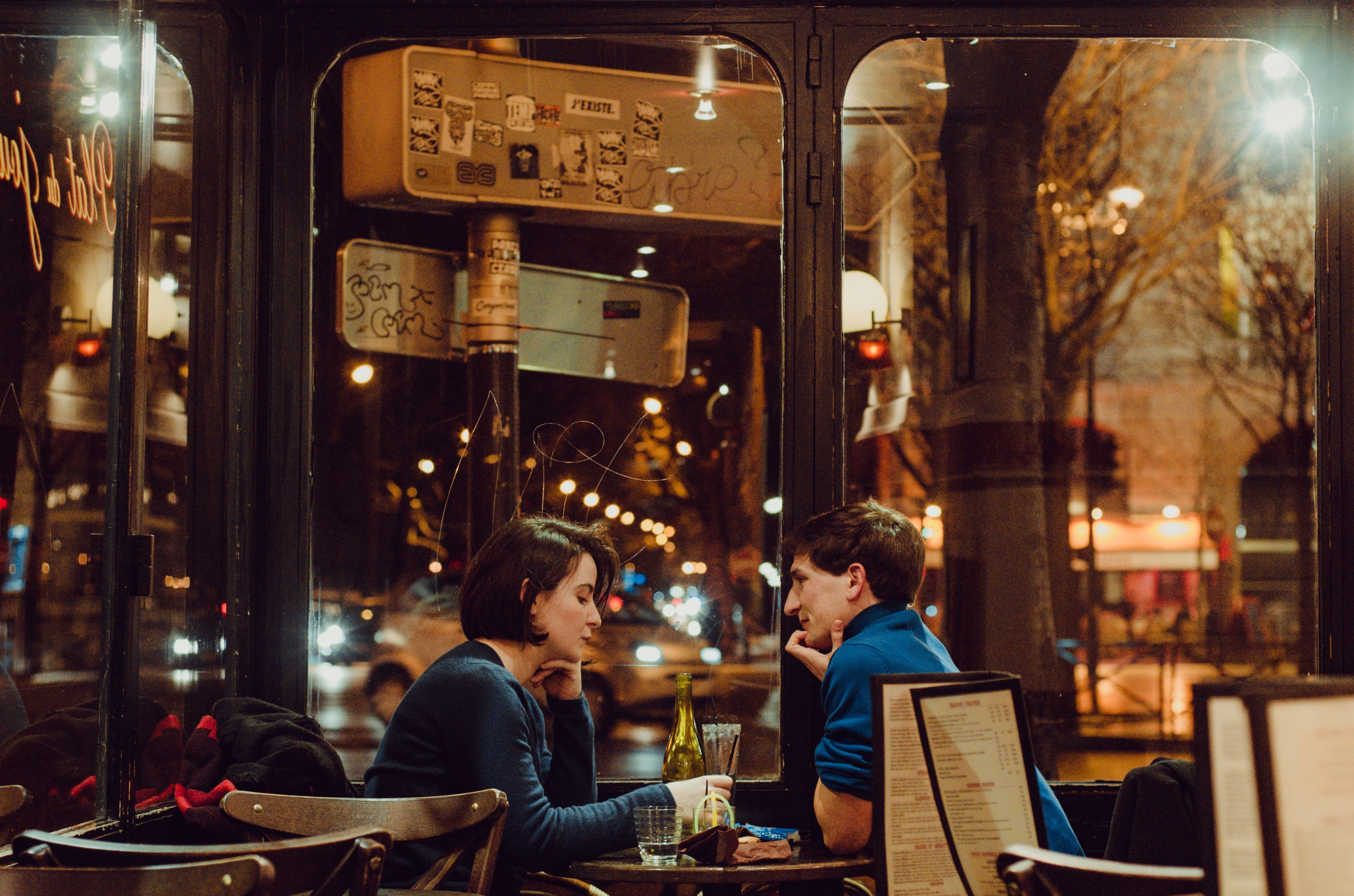This week, 24,000 employees of the University of California (UC) system walked off the job in protest of what they say are unfair wages and insufficient health benefits, a three-day strike that affects ten schools and five of six medical centers across the state. The employees are members of AFSCME Local 3299, the university’s largest labor union, one that represents 15,000 nursing assistants and 9,000 other service workers, including custodians, maintenance workers, gardeners, and cooks.
It’s a critical workforce for the university, and UC has been forced to find ways to keep the lights on without their regular workers during the strike. In medical centers, non-emergency visits have been rescheduled, and other non-essential services have been canceled outright. Meanwhile, students—many of whom depend on the university for their daily bread—have found their meal schedules completely disrupted. How does a university feed itself during a strike?
The University of California—which has to feed almost 279,000 students, four of ten of whom are food insecure, plus faculty and employees—relies predominantly on public sector workers to run their dining facilities. Across the state, administrators have found themselves scrambling for replacements.
One of the smaller UC schools, the University of California, Santa Cruz (UCSC), which enrolls over 18,000 students, manages five dining halls and eleven retail shops, including cafés and grab-and-go commissaries. During the strike, the university has closed all of its retail shops and two dining halls. Four independently operated cafes on campus remain open.
A UCSC dining official disputed the claim that RAs were acting as de facto employees. “I don’t know what the students are telling you, but that’s not true,” said William Prine, director of dining services, when reached by the New Food Economy by phone.
In advance of the strike, UCSC also set up food pantries at its dining halls. On Friday, students with meal plans received bare-bones rations: cup noodles, mac-and-cheese, oatmeal, granola bars, and fruit cups, among other non-perishables. Other dining halls remain open for students to use microwaves.
At the University of California, Los Angeles (UCLA), which has nearly 45,000 students, four dining halls were open on Monday, according to an online calendar. Hot food is still being served, with “continental breakfast” at the dining halls that sounds similar to what’s served up north at UCSC.
 Courtesy of AFSCME 3299
Courtesy of AFSCME 3299 Since the 1970s, some public universities have subcontracted their dining services to facilities, food, and uniform service providers like Aramark, which serves over five million students worldwide, and Sodexo
One student employee told the New Food Economy he’d been reassigned from the Bruin Cafe—where he usually makes coffee and smoothies, works the registers, and cleans—to a residential dining hall, where he served hot food during lunch. The campus’s five cafes and take-out restaurants are closed during the strike.
A UCLA spokeswoman confirmed that, during the strikes, UCLA is relying on its non-union executive and sous chefs to cook for students, “augmented by temporary labor.” The spokeswoman did not state if the temporary labor would consist of reassigned student workers, or new hires, as other divisions at UCLA are doing. According to an email announcement forwarded to the New Food Economy, a “large number” of custodians, clad in “Hi My Name Is” badge lanyards, have been contracted to work on campus during the strike.
Other universities are consolidating services. At the University of California, Irvine (UCI), the school’s 32,000 students will be able to continue eating at campus eateries, all of which remain open during the strike, according to a campus website. (They will be, that is, if they’re willing to cross all-day pickets.)
The fact that the university is able to carry on without its union workforce, while dismaying to some, should not come as a surprise.
In February, I reported on Janus vs. AFSCME, a public sector union case winding its way through the Supreme Court, and its potential affect on food service workers. One of my sources, the Rutgers labor historian Francis Ryan, pointed out that university cafeterias were historically a stronghold for labor unions. But that all began to change during an era of government austerity in the late 1970s.
Absent those stable, middle-class wages of years past, more and more of those jobs went to students, who were, in turn, lesser targets for unionization. Ryan said Sodexo, in particular, focussed on hiring younger workers for the jobs.
“The idea is, you have a terminal labor force there,” Ryan explained. “That detracts from the ability of the union to maintain itself over time.”
In other words: A workplace with low-paid employees, constantly turning over, isn’t attractive to unions. And universities have found they can sometimes sidestep unions entirely when students serve themselves.
The strike, which union members voted to hold after a failed contract negotiation, began Monday morning and is scheduled to end on Wednesday, May 9.











